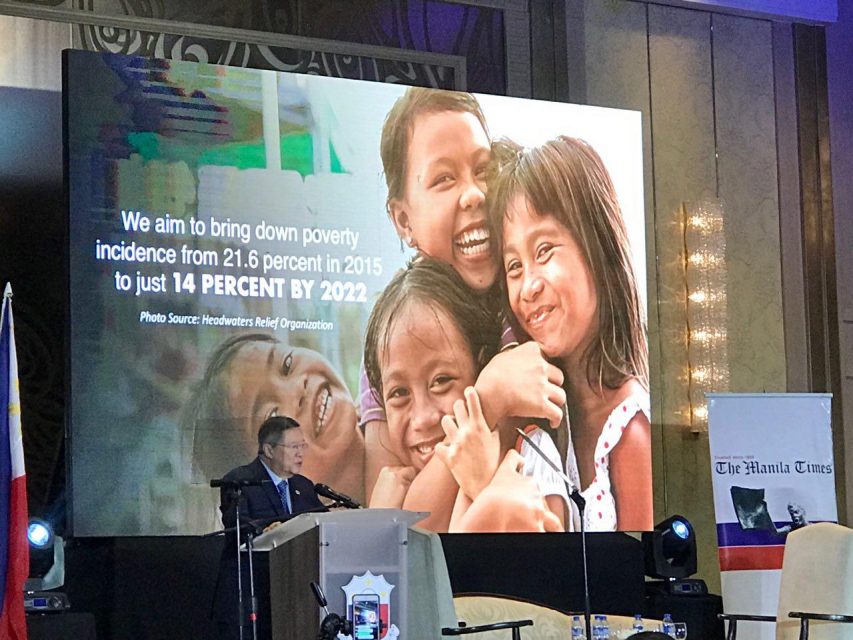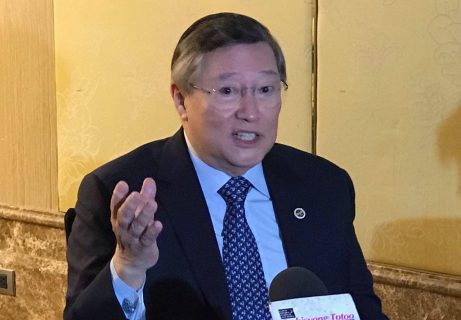
By Caesar Vallejos
OPEN FOR BUSINESS, Eagle News Service
Department of Finance Carlos Dominguez III said that by the end of the Duterte administration, government spending on infrastructure is expected to be equivalent to 7% of Gross Domestic Product (GDP). “By then, we would be able to close the country’s infrastructure gap,” he said.
Speaking at the recently concluded 9th Business Forum on the Philippine Economic Outlook for 2019 organized by the Manila Times, Dominguez said that “the infrastructure is well on its way. We have broken all records in seeking financial support for approved budgets.”
As more projects shall be ready, Dominguez said that “the immense multiplier effects in infrastructure investments will provide a strong stimulus to our economic expansion.”
Despite the challenges the Philippine economy in 2018, it continued on its path of comparatively high growth. “We are also maintaining our target of 7% or better GDP growth this year,” the DOF Secretary said.
To support its economic strategy, Dominguez said that the DOF is slightly raising its fiscal deficit to 3.2 % of GDP this year “to help sustain the accelerated pace of investments in both hard infrastructure and the cultivation of human capital.”
He encouraged businessmen at the Forum to “‘move your enterprises at a pace we imagine our economy to be moving in the coming period.” He described the period as a ‘breakthrough moment’ for our people and the next generation of Filipinos “will be better off because of what we accomplished today.”
Defying the global trend
Dominguez said that “the large trends indicate a slowdown in the growth of the global economy.”
“With our massive infrastructure e program in place, we could defy the adverse trends in the global economy this year,” he said. He also mentioned that economic investments will be leveraged to continue raising domestic demand.
“2019 is the year to complete the policy on tax reform programs. 2020 could be the year our people will start feeling what it means to be an upper middle economy,” he said. However, he noted that if this happens, “our cost of money is going be high and we will no longer qualify for the lower interest rates for poorer countries.”
The Philippines, he said, is now described as “Asia’s new economic powerhouse” and “we will be the growth leader for the region and an inspiring study for the emerging economies.”
Headwinds
Dominguez cited the trade war between US and China as an important headwind for the Philippines ”that does not auger well for the growth of our trade partners.”
 “The growth in our major trade partners has been negatively affected by the unresolved trade issues. When you have unresolved trade issues risks increase. When risks increase, bankers increase their interest rates,” he explained.
“The growth in our major trade partners has been negatively affected by the unresolved trade issues. When you have unresolved trade issues risks increase. When risks increase, bankers increase their interest rates,” he explained.
While the price of energy had dropped significantly, he mentioned the continuing conflicts in the Middle East and other uncertainties as worrisome.
However, the DOF Secretary said that “our own requirements for improved infrastructure and our ability to finance internally through our taxes and local and foreign borrowings are a very good sign that we can overcome and grow our economy even if our trading partners’ demands for our products drop a little bit.”
On debts and borrowings
Dominguez said that even before the government established Build Build Build program, “we demonstrated our ability to raise taxation funds domestically.”
We will raise our funds to the tune of about 20% of our requirements and we will be borrowing the rest,” he announced.
“To see whether our debt is manageable is to see it as a percentage of our GDP. We have the ability to borrow more because we have the productive ability to pay more. We are managing very well the tenor of our debt,” Dominguez stressed.
“The biggest risk in debt is borrowing money and investing it in projects that do not give you a return higher than the cost of the debt,” he said. “Our project evaluation goes through very serious processes and we make sure that the returns of those projects exceed 10%,” he added.
Aside from infrastructure, Dominguez cited education and healthcare as focus areas of the government projects. Fintech is also an area that the DOF wants to promote in the Philippines as it “eases transactions and it makes tax administration much easier. Dominguez mentioned talking to the Alibaba organization, one of the fintech leaders in the world.
Dominguez also recalled that in 2010 to 2016, the cost of money around the world was near zero. “That was the best time to borrow and we did not borrow, that is a big failure of the past administration. It’s a failure that we will not be able to recover from,” he said.
‘Drowning in Chinese debt’
Addressing reports that “Chinese debt is drowning us”, Dominguez emphasized that the projects funded by China go to the same stringent processes. “We negotiate very hard for those terms. We go negotiate for as long a term rate as possible and as low an interest as possible.”
“At the end of 2022, if all our projects funded by China and if we are going to borrow money against those, out total debt to China will be 4.5 % of our total debt, while the debt to Japan will be 9.5 %. While our debt to Japan has double percentage of our total debt compared to China, Dominguez said no one is complaining about drowning in Japanese debt. “So where’s the problem?,” he asked.
“The debt we have in China in dollars is much lower than the commercial terms or the terms we get in the bond market. At 2% per annum, Dominguez said that this is “quite favorable.”







